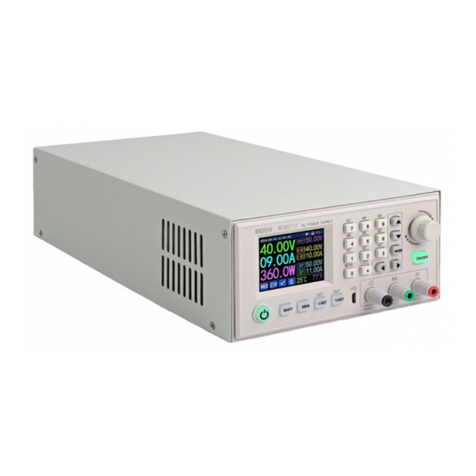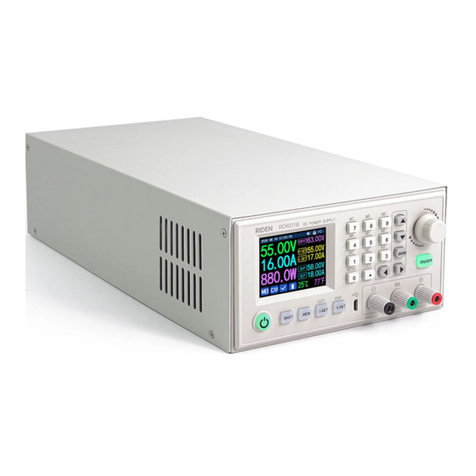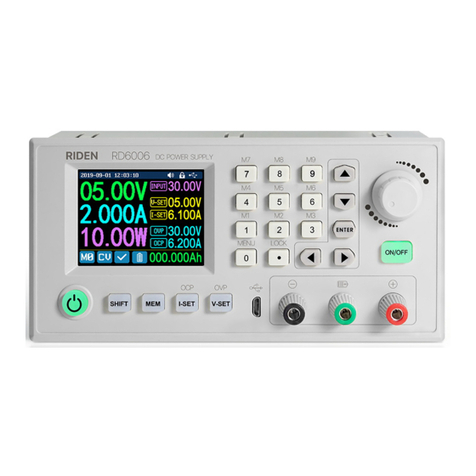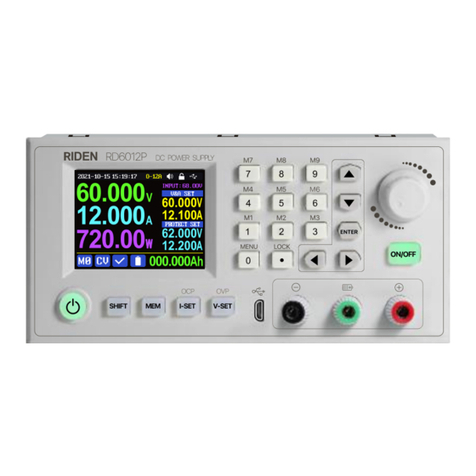
1.4.2 Operation Introduction
In the menu operation, the icon in red or cursor is the currently selected menu,
the icon in blue is not selected, press to confirm or enter, press the encoder
potentiometer to cancel or return, press the direction button to move the cursor or
switch menu, rotate the encoder potentiometer to change the setting, the settings
will be automatically saved when returning from the menu page. Press and hold the
0 button and power on to restore the factory settings, press and hold the 1 button
and power on to restore the factory calibration value, press and hold and
power on to enter the boot mode.
1.4.2.1 Battery Charging Function Introduction
Battery charging operation video:
https://drive.google.com/drive/folders/1g8v_l1X9uwRM1P4GPwKhnP4No
pKIUm1s?usp=sharing
After power on, at battery related information display area, external
temperature, capacity and energy will loop display. When there is output current:
capacity, energy will be automatically accumulated, and automatically cleared after
power off.
The green terminal is connected to the positive electrode of the battery, and the
black terminal is connected to the negative electrode of the battery. After the battery
is correctly connected, the battery charging indicator turns red and the battery is
connected. Press ON/OFF to start charging, the battery charging indicator turns
green . When the actual output current is lower than 10 mA (charging cut-off
current value can be set by user), the output will be shut down automatically. Battery
with protection board or low capacity needs to be charged with red and black
terminals. The charging voltage and current should be set on your own. When the
charging function is not in use, you can connect the green and black terminals with a
cable to prevent interference with the battery detection terminal and accidentally
turn off the output.
It is strongly recommended to use the original charger to charge the battery.
The charging function of this machine can only serve as a temporary replacement,
not for long-term use. There is a risk of fire and explosion during the charging
process. Non-professionals should not operate.




































